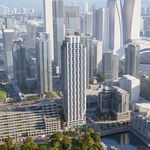It’s been just over a decade (May 2010) since the City of Toronto first published its design guidelines for mid-rise buildings on Avenues (an official term for some of the city’s main streets). Therefore, it seemed like the right time

renx.ca
I thought this was interesting, given:
1. A lot of developers/private-sector planners I follow on Twitter claim that the midrise standards have not lived up to their billing: they are too expensive, as well as hard to approve and build.
2. TOPlanning underestimated Toronto’s population significantly during the design of these standards. For those not following, the latest OP rework estimates that Toronto will have a population of 3.7M by 2051. I understand that Canada has a lot of challenges, from a newly-open US immigration policy, to the high cost of housing and childcare, to the tighter economic pool - but that seems low.
(Barring a serious change in course in immigration policy or some other large not currently foreseen change)
I would peg 4M in a conservative range scenario by 2051
I would peg 4.2-4.5M as a mid-range scenario.
I would get 4.6-4.8M as the high range scenario.
Those numbers aren't science per se, but they aren't pulled out of thin air.
All other things being equal, Canada's immigration levels will likely rise in future years in absolute numbers, even if they decline as a percentage of the population at some point.
Toronto's share of immigration is unlikely to change.
If one looks at recent peak levels, we're seeing immigration to Toronto in the range 70,000-80,000 per year.
So let's cut that way back to 35,000 per year (less than 1/2 current levels). That would bring us to ~4.1M
At 3/4 of current levels, or about 56,000 per year we end up at 4.7M
I don't think its reasonable to assume we would grow at our peak number ever year............
But just to consider it.
77,000 x 30 = 2, 310,000 which would drive Toronto's population to 5.3M
In light of the above, I think my estimates are fair.
Any which way you cut it, I find it hard to imagine the City's scenario. However, that is based on the numbers the province......made up.





